Edgar Degas
Experience the art and look at the life of Edgar Degas.
Fact #1: Beside the Sea
Edgar Degas is known mainly as a figure artist, but he also painted some landscapes. In 1869, a trip to the seaport of Boulogne, in northern France, inspired Degas to create over forty images of the seashore and sand dunes. These calm, empty scenes look very different from his lively ballet and racetrack paintings.
Degas made his seaside pictures with pastels, an artist's tool similar to crayons. Most artists think of pastels as good for sketching, but Degas used them for finished works as well. (Beside the Sea is considered finished because he signed it.) He became so skilled with pastels that eventually this became his favorite medium, or art-making material. Because pastels dry fairly quickly, he could instantly add more color to his compositions. Today Degas is still regarded as the most important pastel painter.
Although a box of pastels is portable, Degas may not have painted this scene while looking at it. He preferred to work in his studio. Unlike many of his fellow Impressionist artists, he rarely painted outdoors. Partly this was because of vision problems, which began when he was in his thirties. He found bright lights unbearable and dreaded being out in the sun. Painting outdoors also went against his belief that a painting should come from an artist's memory and imagination.

Fact #1 caption/s
Claude Monet, another Impressionist artist, believed in painting his landscapes outdoors (en plein air, in French).
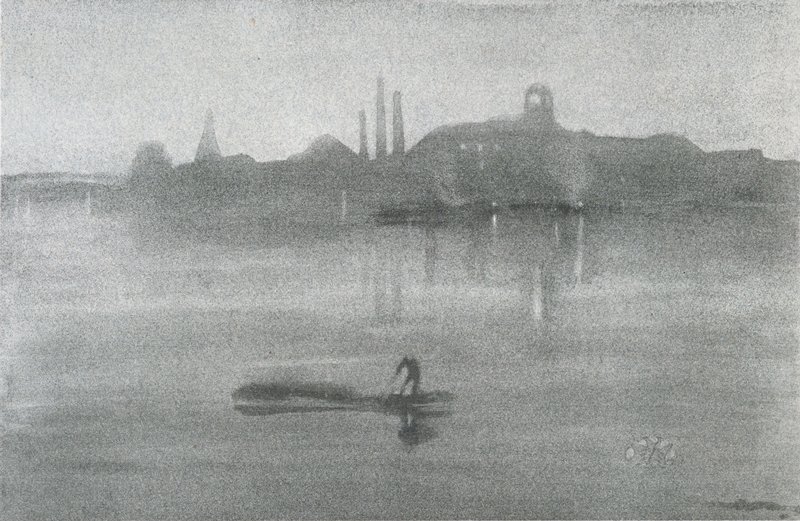
Because of their mysteriousness, Degas's seascapes have been compared to those of James McNeill Whistler, an American artist who lived in France.

Fact #2: And They're Off!
In 1857 the Longchamps racetrack opened at the Bois de Boulogne, a popular park in Paris. Horse racing was very fashionable among the elite, especially men. In fact, the races were the highlight of the social season. As a member of the upper class, Degas visited the track frequently. It became an important subject for his art.
Degas wanted to capture the movements of the horses and jockeys. At the track, he watched them with fascination, making sketches and jotting down notes. He also studied photographs of horses, in particular those by Eadweard Muybridge, who did a series of horses in motion in the 1870s and 1880s.
The original Galloping Horse was probably made of wax and clay. When Degas's sculptures were discovered in his studio after his death, many were beginning to deteriorate. As a way to preserve them, his heirs had a series of bronze casts made from seventy-two of the small sculptures. Twenty-some bronzes were made of each figure.

Fact #2 caption/s
Muybridge's photographs show in detail the movements of a galloping horse.

Degas stopped making horse sculptures in the 1890s and focused on dancers and bathers.


Fact #3: At the Ballet
Degas is probably best known for his pictures of ballet dancers. He depicted dancers at nearly every moment of their dancing life, resting, rehearsing, making backstage preparations, performing, and taking curtain calls. All of his paintings reflect his close observation of the dancers movements, from specific dance positions to the slightest stretch.
Degas liked to catch his subjects in a private moment. Here a young dancer is slumped over, unaware that she is being sketched. But Degas was watching every little motion she made. Notice the faint outlines showing how she moved her left arm several times, stretching it up, extending it down toward her neck, and then bringing it up to her face. Dashes of line around her back and legs also suggest movement.
Degas sketched constantly. Often he used his drawings as the basis for his colorful pastels. He would make studies of various dancers, alone or in pairs, and then combine them all into one picture when he returned to his studio. That way the final version contained many different movements and beautiful costumes.

Fact #3 caption/s
Ballet dancers weren't the only women Degas chose for his subjects. He also depicted women making hats, doing laundry, or taking a bath.

Degas was a master draftsman who often sketched his subjects before including them in a painting.
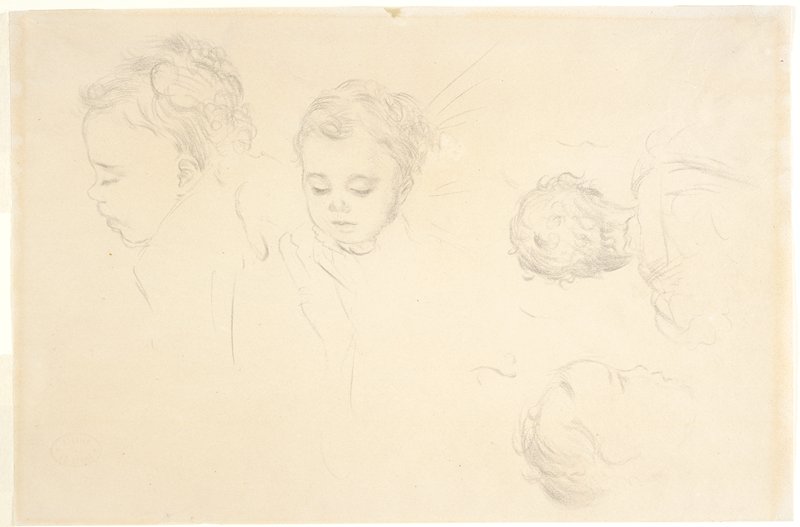
Near the end of his life Degas's eyesight became extremely poor, and he switched from painting and drawing to making sculpture. But he continued to focus on dancers.

Fact #4: Strike a Pose
Although Degas rarely painted portraits to make money, he sometimes painted his family and friends. He had a soft spot for children, and throughout his life he painted pictures of his nieces and nephews and also the sons and daughters of his friends. The girl in this portrait is Hortense Valpinçon, the daughter of his childhood friend Paul.
Degas didn't paint Hortense in a formal pose. Instead he had her lean casually against the end of a table. She is dressed simply, in a white long-sleeved apron, black dress, cream shawl, and straw hat. Her plain clothing contrasts with the bold patterns on the wall, tablecloth, and draped fabric.
Hortense is adorable, alert, and calculating. In her hand she holds a piece of apple. Degas gave her an apple as a reward for posing, and throughout the sitting she nibbled away. Now, down to her last slice, she wonders whether she should eat it or not. Even though the painting took several days, Degas captured this moment as if in a snapshot.
Looking at this portrait, we can get an idea of how Degas worked. The dashed black lines around Hortense's back suggest that he kept adding details to the little girl's figure. A closer look at the area around her hands reveals how he repainted them.

Fact #4 caption/s
Degas had been friends with Hortense's father, Paul, since their school days.

Degas was the eldest of five children. This is his sister Marguerite.
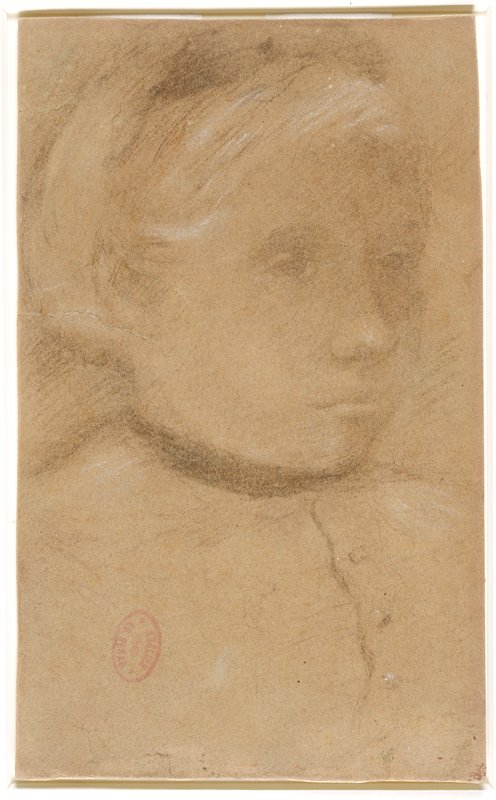
Here Degas's younger brother is posing as a suave gentleman.
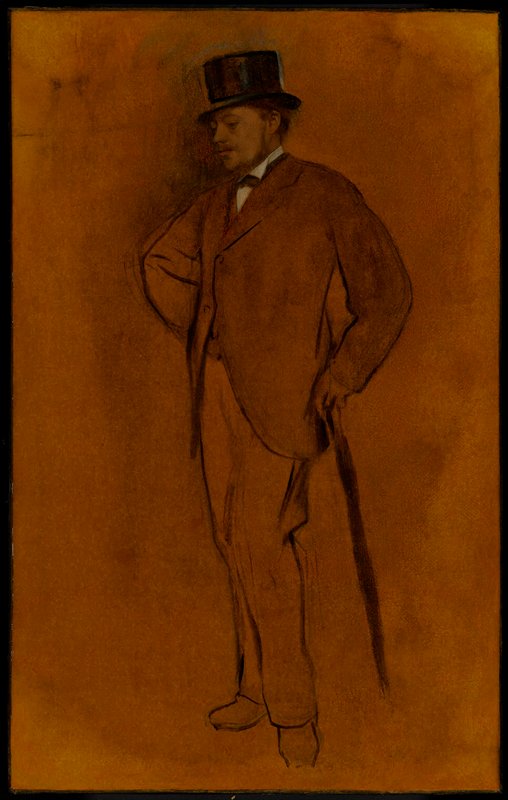
Fact #5: A Close Friendship
Degas encountered the work of the American artist Mary Cassatt several years before he met her. He was so impressed that in 1877 he invited Cassatt, who was living in Paris, to exhibit with the Impressionist artists in their next exhibition. The two artists became lifelong friends.
Degas, who was older than Cassatt, was considered her mentor. But each influenced the other's artwork. Because of Degas, Cassatt began using pastels and experimented with etching. And Cassatt's friendship inspired Degas to frequently depict the everyday life of ordinary women.
The friends also used each other as subjects for their art. In 1879 Degas made a series of pastels, drawings, and etchings of Cassatt at the Louvre, the national museum of France. Here she is shown from behind as she confidently strolls the galleries, umbrella in hand. Even though her face can't be seen, her posture, sleek figure, and refined clothing all give her an air of elegance. From this portrayal, it's easy to see that Degas admired his friend.
This etching also reveals Degas's interest in Japanese prints, which Cassatt shared. It is narrow and vertical, like the Japanese format known as a pillar print. Also like Japanese prints, Degas's picture is full of patterns, on the gallery's walls and floor and the women's clothing.

Fact #5 caption/s
The woman seated on the bench is Cassatt's sister Lydia.
Most of Cassatt's subjects were women. Her use of different patterns was influenced by Japanese prints.
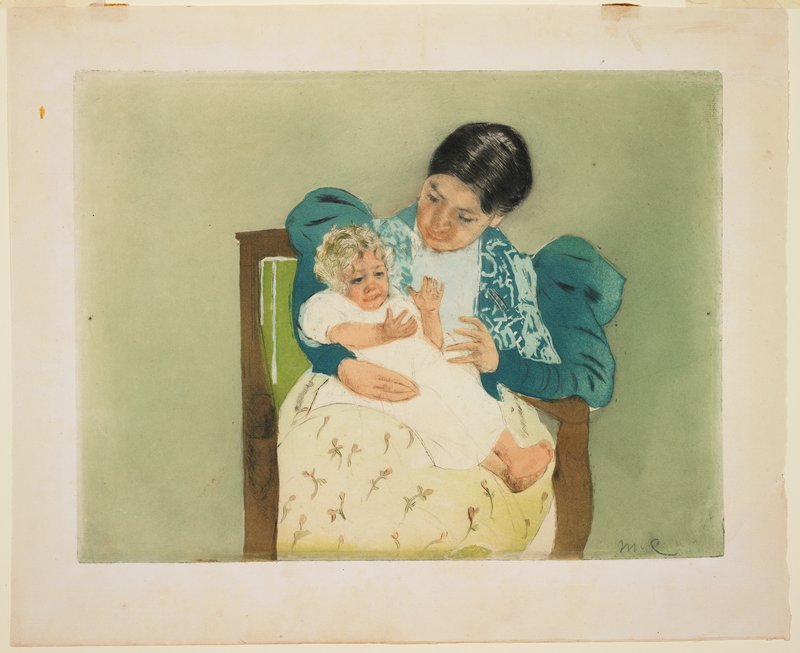
Japanese prints that are long and narrow are known as pillar prints. How else is this print like Degas' etching?

Related Activities
Friendly Portraits
Degas often painted his family and friends. Partner with a classmate and be each others model for a portrait. Have your partner hold the pose for at least five minutes so you can practice drawing from a live model.
Horsing Around
Degas was fascinated by horses and made numerous sculptures of them. Using a variety of materials such as clay, metal, and plastic, make a sculpture of your favorite animal.
At the Museum
Visit Mia to see various types of art by Degas. Paintings and drawings are almost always on view. Because drawings and prints are very sensitive to light they might not be on view.
Books for Children
Anholt, Laurence. Degas and the Little Dancer. New York: Barron's Educational Series, 2007.
Meyer, Susan E. First Impressions: Edgar Degas. New York: Harry N. Abrams, 1994.
Venezia, Mike. Getting to Know the World's Greatest Artists: Degas. New York: Children's Press, 2001.
Wish You Were Here
The seascape pastels Degas made in 1869 were inspired by his vacations along the coast of France. Image you are vacationing in the place Degas painted. How does it feel to be there? What is the weather like? How will you spend your days? Write a letter to a friend about your vacation by the sea.